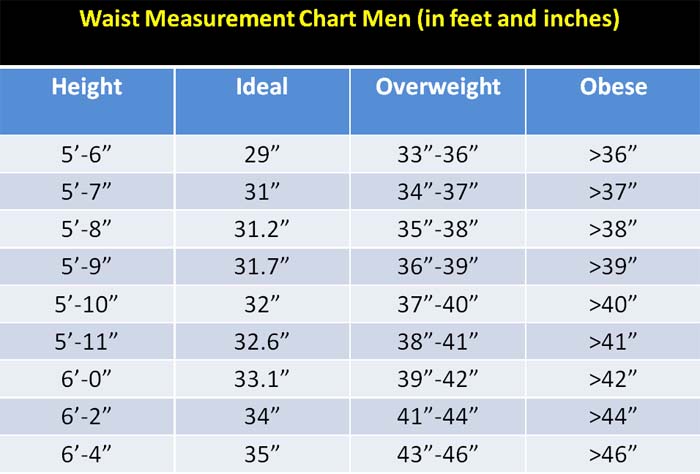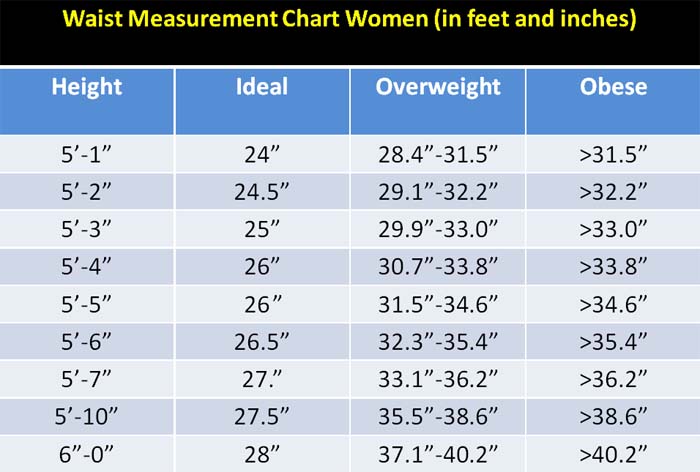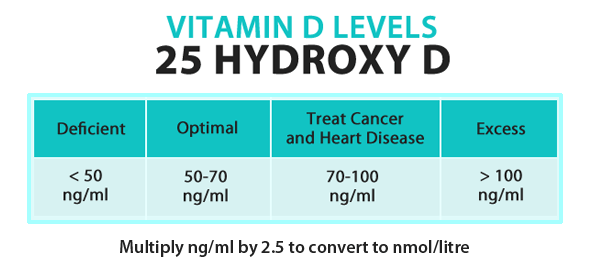How Vitamin D Can Help Slash Your Risk of 7 Different Acute and Chronic Diseases
January 05, 2013 | 69,681 views | + Add to Favorites
| 414 |
|
Print
|
By Dr. Mercola
When it comes to vitamin D research, there seems to be no end to the good news. No matter what ailment is being evaluated, vitamin D churns out positive results. Below, I'll review seven recent findings from the medical literature.
Keep in mind that while these studies looked at the health effects of vitamin D supplementation, the ideal way to optimize your vitamin D levels is through appropriate sun exposure.
If sun is unavailable for whatever reason, next best would be a safe tanning bed, as UV ray exposure appears to have health benefits over and beyond the production of vitamin D.
To learn more about safe and effective sun exposure, please see my previous article, Little Sunshine Mistakes that Can Give You Cancer Instead of Vitamin D.
Vitamin D and Strength Training – A Potent Combo to Reduce Dangerous Visceral Fat
That said, one of the most exciting findings, from my perspective, is that vitamin D supplementation combined with resistance training may help decrease your waist-to-hip ratio – a measurement that is far better at determining your risk for type 2 diabetes and heart disease than body mass index (BMI).
The study, published in the journal Clinical Nutrition,1 included 23 overweight and obese participants, all of whom completed 12 weeks of resistance training. Half of them also received 4,000 IU's of vitamin D, while the other half got a placebo. Interestingly, analysis revealed an inverse association between the change in vitamin D status and the change in waist-to-hip ratio.
According to the authors:
"The results of the current study demonstrated that vitamin D supplementation improved muscular power in healthy overweight and obese individuals within four weeks and that elevated vitamin D status was associated with greater losses in waist circumference, with no additional benefits in lean mass accumulation, muscular strength, or glucose tolerance during participation in a 12-week resistance exercise training program.
The current results support previous findings that indicate a relationship between vitamin D status and waist circumference rather than fat mass. The inverse relationship with waist circumference is particularly important as abdominal fat has been implicated as an important factor in the development of Type 2 diabetes... Waist circumference is also an independent risk factor for cardiovascular disease. Therefore, the greater decrease in waist circumference associated with higher vitamin D intake represents a potential reduction in risk for metabolic disease and cardiovascular risk."
New Tables for Waist Measurement
This recent observation on vitamin D and its connection to fat mass and waist circumference prompted me to research the topic further and compile the following two charts2 to help you guide your health progress. I am convinced that properly measuring your waist size is far more important than monitoring your weight, as it will actually differentiate your fat mass.
More Evidence Vitamin D May Help Prevent Type 2 Diabetes
Additional support for the theory that vitamin D can be beneficial in the fight against type 2 diabetes was published in June.3 Here, the researchers found "a strong additive interaction between abdominal obesity and insufficient 25(OH)D in regard to insulin resistance." They also claim 47 percent of the increased odds of insulin resistance can be explained by the interaction between insufficient vitamin D levels and a high BMI. They concluded that:
"Within a cross-sectional, nationally representative sample, abdominal obesity and insufficient 25(OH)D interact to synergistically influence the risk of insulin resistance."Yet another study4 published in Diabetes Care also suggests vitamin D supplements may help prevent type 2 diabetes mellitus in people with pre-diabetes. While the study is only an observational one and cannot establish causality, the researchers report that the participants who had the highest vitamin D levels were 30 percent less likely to develop diabetes during the three-year evaluation period, compared to those with the lowest levels.
Vitamin D Shows Eye Health Benefits
Next, a study5 published in January found that supplementing with vitamin D3 helps rejuvenate aging eyes by reducing inflammation and amyloid beta – a risk factor for age-related macular degeneration, which is the leading cause of blindness. According to the authors:
"Vitamin D3 plays a key role in immune regulation and may protect against the aging process. A focal point for age-related changes is the outer retina of the eye where there is high metabolic demand resulting in a gradual increase in extracellular deposition, inflammation, and cell loss giving rise to visual decline. Here, we demonstrate that vitamin D3 administration for only 6 weeks in aged mice significantly impacts on this aging process... Recently, vitamin D3 has been linked epidemiologically to protection against age-related macular degeneration. Hence, vitamin D3 enrichment is likely to represent a beneficial route for those at risk."
Dietary Vitamin D and Sun Exposure Linked to Reduced Alzheimer's Risk
Speaking of amyloid beta, this component is not just a risk factor for macular degeneration, it's also found in the brains of Alzheimer's patients. No wonder then that scientists have discovered an association between vitamin D status and your risk of developing Alzheimer's disease.6 As reported by Dr. William Grant for The Vitamin D Council:7
"This cohort included women over the age of 75 years at time of enrollment and was designed to study risk factors for hip fractures over a four-year period. Women who had taken vitamin D supplements in the 18 months prior to enrollment were excluded. Dietary factors and midday sun exposure habits were examined at time of enrollment. The mean dietary vitamin D intake was 334±172 IU/day. The presence of Alzheimer's disease and other dementias was assessed seven years after enrollment.
Those in the highest fifth of vitamin D intake had one-quarter the incidence rate of Alzheimer's disease as the other four fifths... In addition, those in the highest fifth of sun exposure had half the incidence rate of Alzheimer's disease..."
'Sunshine Vitamin' Helps Treat Tuberculosis and Slash Pneumonia Deaths
Vitamin D's ability to fight infection8 has again been highlighted in studies relating to tuberculosis and pneumonia. In the first case, researchers at the University of London discovered that sun exposure – or a high dose of supplemental vitamin D – can be helpful in the treatment of tuberculosis, shortening the length of the illness.9, 10 Tuberculosis is a lung disease caused by the Mycobacterium tuberculosis bacterium. It's one of the top three causes of death, worldwide, for women between the ages of 15 and 44. As reported by CBS News:11
"Before antibiotics were readily available, doctors would to send their patients to receive heliotherapy - basically prescribed sunbathing. The practice was stopped since more effective antibiotics were invented, but physicians have often wondered why the sunshine treatment seemed to somewhat work.
Researchers at Queen Mary at the University of London decided to test out the old treatment with modern day antibiotics. What they discovered was that when coupled together, antibiotics and high doses of vitamin D - which is created in the body when it is exposed the sun - helped people recover faster from tuberculosis."Ninety-five tuberculosis patients were included in the study. While all received antibiotics, 44 were given supplemental vitamin D, and the remaining 51 received a placebo. Those who received vitamin D cleared the tuberculosis bacterium in just 23 days, compared to 36 days for those given a placebo. The vitamin D group also had less inflammation during the treatment period.
According to the authors, one of the ways vitamin D helps modulate your immune system is via calcitriol, the active metabolite of vitamin D, which induces innate antimicrobial responses in your body and suppresses proinflammatory cytokine responses.
Meanwhile, Dutch scientists have found that measuring vitamin D levels in patients' bodies can accurately predict their risk of dying from pneumonia within a month of admission to the hospital. The findings, which were presented at the European Respiratory Society Annual Congress,12 suggest that treating patients who have pneumonia with vitamin D supplements may stimulate their immune systems and improve outcomes. Adding vitamin D measurement to the pneumonia severity index could also help improve the accuracy of this prognostic tool.
According to GP Online:13
"Researchers examined disease severity and outcomes in 272 adults attending the emergency department with community-acquired pneumonia. Over half (53 percent) of patients were vitamin D deficient, of which 24 percent had severe deficiency. The team then looked at vitamin D status among these patients and compared this to their immune responses, including levels of C-reactive protein, total cortisol and leukocytes.
They found severe vitamin D deficiency raised the risk of intensive care admission and 30-day mortality. Levels of vitamin D independently predicted 30-day mortality, and improved the accuracy of the PSI score from 78 percent to 85 percent.
Co-author Dr Sabine Meijvis... said: 'Based on these results, [testing] vitamin D levels on admissions could be a useful prognostic biomarker for patients with pneumonia.' She added: 'Based on the observational design of the study, we are unable to establish a causal relationship between vitamin D levels and adverse outcomes. However, when future studies are able to confirm such a causal relationship, vitamin D supplementation might be a promising candidate for adjuvant treatment during pneumonia.'"
Correction of Vitamin D Deficiency Improves Seizure Control in Epilepsy
Last but not least, vitamin D appears to be beneficial for those with epilepsy as well. Hungarian researchers discovered that by correcting vitamin D deficiencies, epileptics were able to control their seizures better.14
The pilot study included 13 subjects between the ages of 19 and 60, who had had epilepsy anywhere between 10-42 years. The median vitamin D levels at the outset of the study was 11.8 ng/ml, ranging from less than 4 ng/ml up to 34.2 ng/ml. All subjects were given a one-time mega-dose of vitamin D3, ranging from 40,000 IU's all the way up to 200,000 IU's, followed by a daily dose of 2,000-2,600 IU's a day for three months, in an effort to correct each individual's vitamin D status and bring them up to at least 30 ng/ml.
At the 90-day follow-up, the median vitamin D level for the group was 38 ng/ml, ranging from 23.3 to 45 ng/ml. They then tallied the number of seizures experienced during the three-month long treatment period, compared to the three months prior to treatment.
Ten out of 13 had a decrease in the number of seizures; five of which experienced more than a 50 percent reduction. Two participants had more seizures, while one experienced no change at all. Overall, the group had a 40 percent reduction in the number of seizures. While the authors did not offer an explanation for the results, they did note that vitamin D receptors are present in the brain.
New European Guidance on Vitamin D Intake
The Multiple Sclerosis Trust16 also noted that researchers are studying vitamin D deficiency in people with multiple sclerosis as well, to determine a safe and therapeutic dose. In a surprising but positive move, the European Food Safety Authority has raised the RDA for vitamin D supplementation to levels far beyond American guidelines. The EU recommendations are now as follows:15
- Adults 18 years or older = 4,000 IU/day
- Children 11-17 years of age = 4,000 IU/day
- Children 1-10 years of age = 2,000 IU/day
- Infants less than 1year of age = 1,000 IU/day
Reminder: The Best Form of Vitamin D Does Not Come in a Pill...
Again, while this article is focused on research related to vitamin D supplementation, it's important to remember that the IDEAL way to optimize your vitamin D levels is through appropriate sun or safe tanning bed exposure. While your skin does create vitamin D3 in response to sun light, which is theoretically the same as the D3 you get from an oral supplement, there's cause to believe that the vitamin D created from sun exposure may have additional health benefits.
If Taking a Vitamin D Supplement, Take the Right Form
Keep in mind that if you do opt for a supplement, make sure you're taking vitamin D3 and not the synthetic D2. This is important, as a recent analysis17 of 50 randomized controlled trials, which included a total of 94,000 participants, showed:
Also, while Europe is doing the responsible thing by increasing the recommended daily allowance for vitamin D, it's important to realize that the most important factor is your serum vitamin D level (the level in your blood), not the dose. The only way to determine whether you're within the therapeutic range is to regularly test your vitamin D levels. If you're like most people, you'll likely need far more than 4,000 IU's a day. According to the most recent research, the ideal adult dose is closer to 8,000 IU's a day in order to achieve serum levels at or above 40 ng/ml.
- A six percent relative reduction in mortality among those who used vitamin D3, but
- A two percent relative risk increase among those who used D2
That said, you really should be taking whatever dosage required to obtain a therapeutic level of vitamin D in your blood. For more information, including an in-depth explanation of everything you need to know before you get tested, please see Test Values and Treatment for Vitamin D Deficiency.



No comments:
Post a Comment